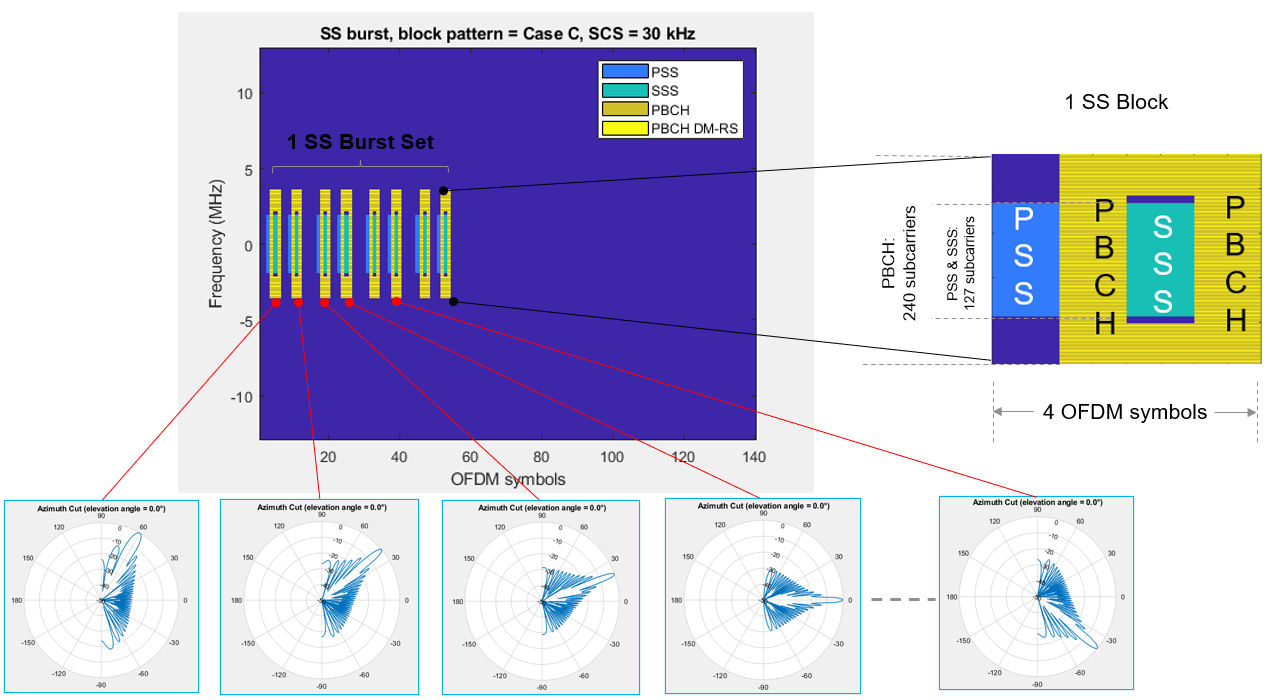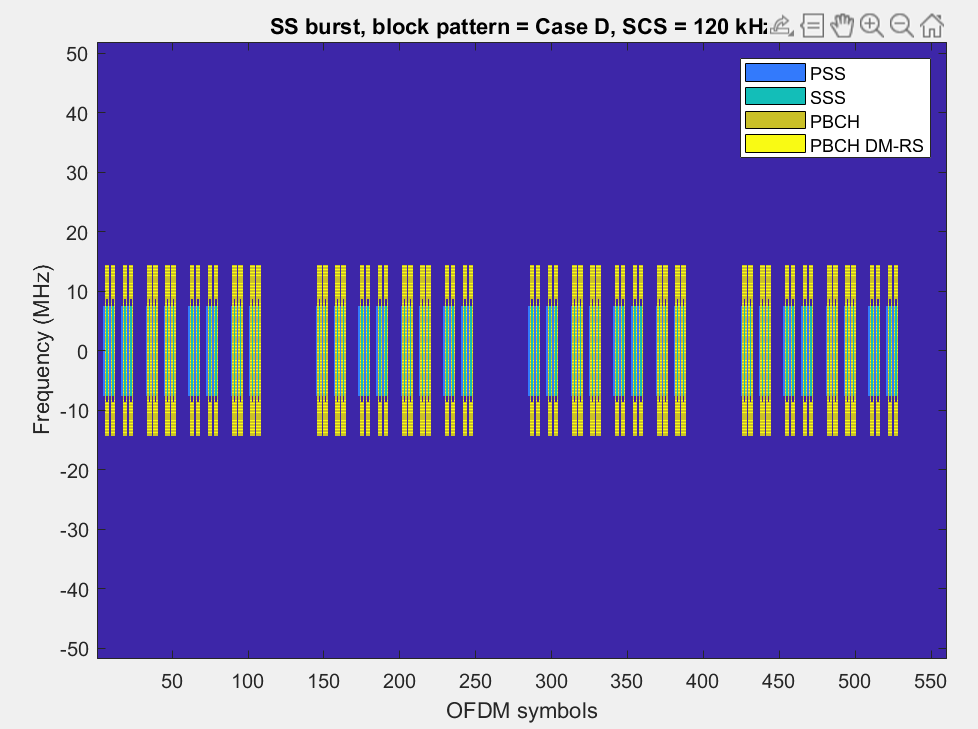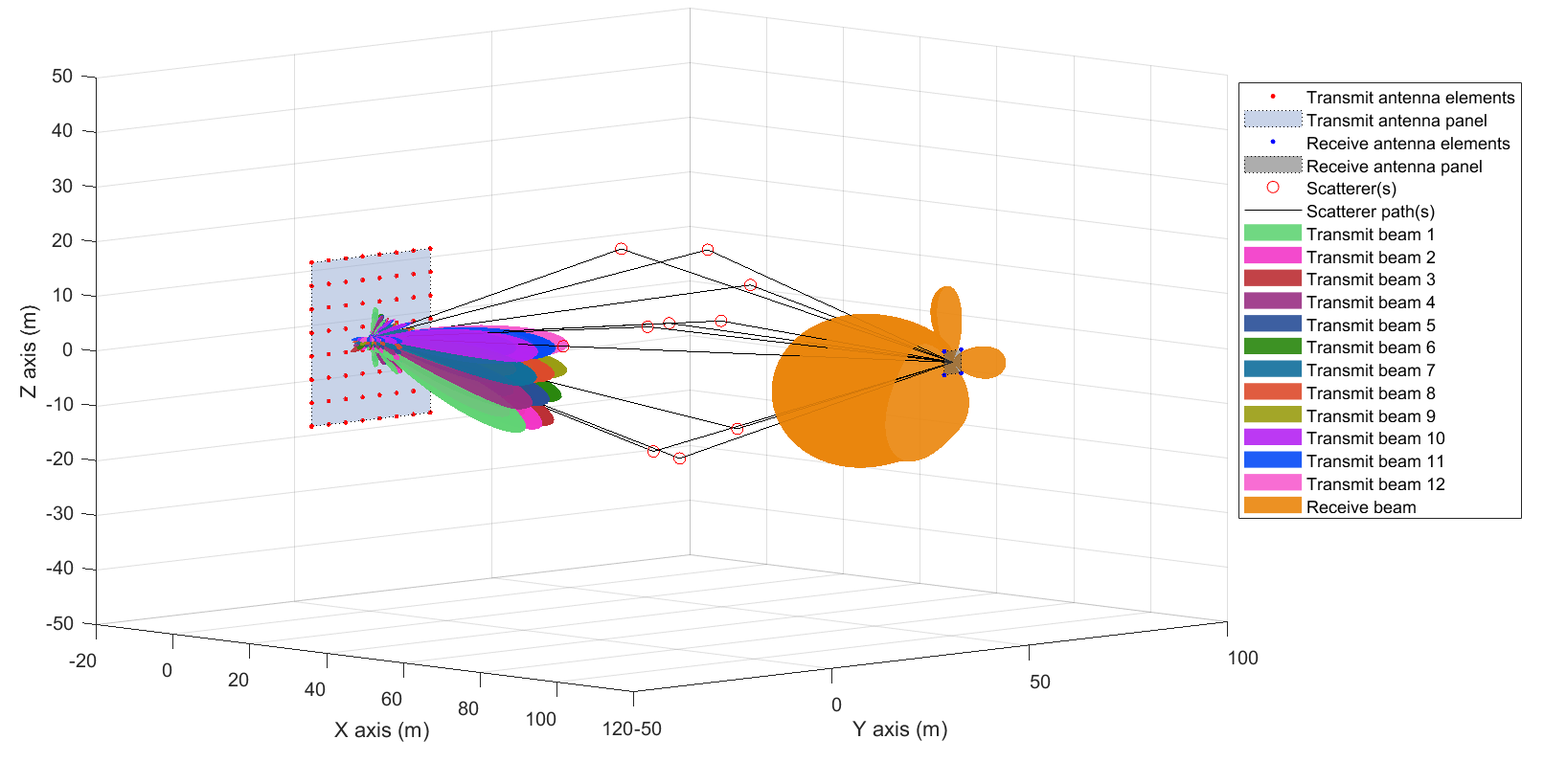WHITE PAPER
Understanding 5G Beam Management
A key feature of the 5G-New Radio (NR) design is its ability to operate in two different frequency ranges: sub-6 GHz and millimeter wave (mmWave). As the availability of sub-6 GHz range becomes more limited, mmWave frequency bands with wider bandwidths will become more predominant. mmWave is a short-range, high-frequency wave operating above 24 GHz spectrum, which offers higher capacity.
Characteristics such as propagation loss, signal blockage, and fading effects differ from mmWave to the sub 6Ghz band, which introduces new challenges for the system design and affect the end-to-end throughput and quality of the user experience. Throughput is one of the key factors in making 5G successful.
To address these limitations, 3GPP 5G NR standards define new Physical Layer (PHY) and Medium Access Control (MAC) layer features to support directional communications. Among the important features is beam management, which is used to acquire and maintain beams. It also defines new initial access procedures to ensure successful directional transmission.
In this white paper, we discuss various beam management techniques and the way they fit in to the 5G NR network. We also analyze the beam management procedures described by 3GPP and see how to simulate them using MATLAB®, 5G Toolbox™ and Phased Array System Toolbox™.
The Need for 5G NR Beam Management
4G LTE user equipment (UE) periodically monitors the radio link to obtain the channel quality of its serving eNodeB. This approach enables it to determine whether the network is able to reach the UE with an acceptable link quality. If the link quality is found too low from threshold, the UE will report a radio link failure (RLF) and trigger a higher-layer reconnection process. This process includes initiating a new cell re-selection procedure, which is more time consuming and hence results in a drop in the overall data rate.
With the advancement of 5G NR into the mmWave regime, where hybrid beamforming is typically preferred at both base station and the user equipment, managing the network becomes more complicated. On the other hand, highly directional beamforming architecture with a larger number of antenna elements becomes very crucial for achieving higher data rate. Special procedures are essential for the UE to establish connection and maintain the link even in mobility scenarios.
mmWave enables directional communication with a larger number of antenna elements and provides an additional beamforming gain, which compensates for the propagation loss. However, directional links would need precise alignment of beams at the gNodeB (gNB) and UE. This introduces the need for efficient management of beams where UE and gNB regularly identify the optimal beams to work on at any given point of time.
3GPP has defined a set of beam management procedures for 5G NR that are applicable for both modes of operation:
- Idle mode: This is when UE does not have active data transmission. Idle mode procedure is used when UE is trying to connect to a network for the first time while switching on or reinitiating connection after waking up. Beam management in idle mode will help in establishing a directional initial access.
- Connected mode: This is when active data exchange is taking place between the UE and gNB and the UE is moving within the cell. In this mode, there is a high chance of signal deteriorating rapidly due to the characteristics of mmWave, so managing the beam in real time will help in maintaining a healthy link.
The use cases for 5G such as enhanced mobile broadband (eMBB), ultra reliable and low latency communication (URLLC), and massive machine type communications (mMTC) will need technical innovations, and 5G beam management becomes indispensable.
Components of Beam Management
Beam management is a set of Layer 1 (PHY) and Layer 2 (MAC) procedures to establish and retain an optimal beam pair for good connectivity. A beam pair consists of a transmit beam and a corresponding receive beam in one link direction.
Before a UE can communicate with the network, it must perform cell search and selection procedures and obtain initial cell synchronization and system information. The first step in that process is acquiring frame synchronization, finding out the cell identity and decoding the MIB and SIB1. See a detailed example that demonstrates the NR cell search and MIB and SIB1 recovery procedure.
In the case of a multi-antenna system that transmits multiple beams, detecting the beams from gNB is also a part of the initial procedure where the UE normally detects all the beams in the search space. Figure 1 shows the timing diagram for the UE attach procedure, which includes various aspects of beam management.
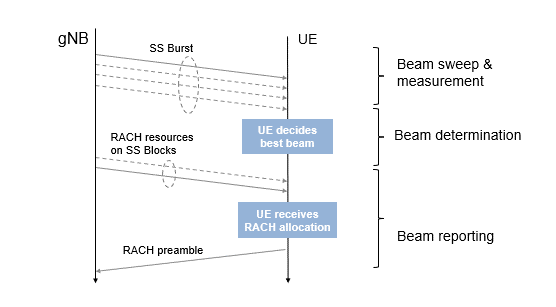
Figure 1. UE attach timing diagram.
The components of beam management are detailed in the following sections.
1. Beam Sweeping
Beam sweeping is used during initial access by UE to choose the best beam.
A gNB transmits beams in all directions in a burst at regular defined intervals. Whenever a UE is synchronizing with the network, it reads the synchronization signal block (SSB) and extracts the following:
- Primary synchronization signal (PSS):
- One of three possible sequences
- Provides timing estimate
- Secondary synchronization signal (SSS):
- One of 336 possible sequences
- Provides cell ID (one of 3*336 = 1008)
- Physical broadcast channel (PBCH) and demodulation reference signal (DMRS):
- Contains master information block (MIB)
- Includes basic information to take the next step, which is to decode the system information block (SIB)-1
A single SS block spans four OFDM symbols in time and 240 subcarriers in frequency (20 resource blocks). Each SS block corresponds to a specific beam, beamformed in a different direction. A group of SS blocks form one SS burst set that spans a 5ms window. The SS burst is repeated periodically with a period of 20 ms. In Figure 2, a group of eight SS blocks forms one SS burst set, which corresponds to FR 1 (3 to 7.125 GHz) in Table 1.
The maximum number of SS blocks in a SS burst set is dependent on the operating frequency range, as shown in Table 1.
| Frequency Range | SS Blocks per SS Burst Set |
|---|---|
| FR 1 - up to 3 GHz | 4 |
| FR 1 - 3 to 7.125 GHz | 8 |
| FR 2 - mmWave | 64 |
Table 1. SS blocks for frequencies.
2. Beam Measurement and Determination
UE measures the beam strength by measuring received signal power.
In idle mode it is based on the synchronization signals, and in connected mode it is based on the channel state information reference signal (CSI-RS) in downlink and sounding reference signal (SRS) in uplink. UE searches for the best beam periodically using the predefined threshold criteria defined by the gNB and identifies the beam that has highest reference signal received power (RSRP).
3. Beam Reporting
The best beam identified by the UE is informed to the gNB; this is called beam reporting.
A random access channel (RACH) is an uplink channel used during initial access or when mobile is out of sync with the network and needs to establish synchronization. In idle mode, after the UE selected the beam, there is one or more RACH interval for the UE with a certain time and frequency offset, which it transmits the RACH preamble. The UE transmits the physical RACH (PRACH) preamble corresponding to the SS block for which the best beam was identified. There is a one-to-one mapping between the received SS block and the transmitted RACH preamble. This is a way for the UE to report the best beam to the gNB.
The network configures the UE to perform certain measurements and report them on a preconfigured interval; this process is called measurement reporting. In connected mode, when the UE is already connected with the gNB and active data transfer is taking place, it reports the beam through a measurement report to gNB.
4. Beam Recovery
In the case of beam failure due to poor channel condition, the beam recovery process is triggered to get back a new beam. UE monitors the reference signal and identifies the beam failure once the failure trigger conditions are met.
UE chooses the next best beam for sending in a random access (RA) preamble when the beam failure happens. If first attempt of RA fails, it sweeps to another beam for another RA procedure. The RA preamble is sent in the PRACH. Finally, UE receives a downlink resource allocation and an uplink grant on the physical downlink control channel (PDCCH).
5. Beam Switching
Switching from one beam to another can also be called intra-cell mobility or beam-level mobility. Beam switching is based on a trigger condition for a beam and the configured beam switching algorithm. This is applicable when UE is in connected mode and can be done through L1/ L2 procedures. On the other hand, handover is for inter-cell mobility and is an L3 procedure.
Beam Management Procedures
3GPP TR 38.802 Section 6.1.6.1 defines beam management as three procedures. In this section, we will describe these procedures and focus on simulating them using MATLAB.
Simulation plays a key role in designing, developing, and validating a system, since it provides flexibility in creating multiple test scenarios and conditions. MATLAB acts as a unified platform by enabling a joint baseband, RF, and antenna simulation in a single environment.
Procedure 1 (P-1): SSB-Based Beam Sweeping
This procedure focuses on the initial acquisition based on SSB for a UE in idle mode. During the initial acquisition, beam sweeping takes place at both the transmit and receive ends to select the best beam pair based on the RSRP measurements. In general, the selected beams are wide and may not be an optimal beam pair for data transmission and reception. Once connected, the beams are further refined using CSI-RS (for downlink) and SRS (for uplink), which is described in the next section.
To simulate P-1, we need to generate a synchronization signal burst, which can be done using 5G Toolbox. The next step is to beamform each of the SSBs within the burst to sweep over both azimuth and elevation directions and transmit this beamformed signal over a spatial scattering channel. The receiver side processes the received signal over the multiple receive-end beams.
The RSRP for each of the transmit-receive beam pairs can be measured to determine the beam pair link with the maximum RSRP. This beam pair link thus signifies the best beam-pair at the transmit and receive ends for the simulated spatial scenario. Figure 3 shows the processing steps with the beam management related blocks highlighted in red.
The SS burst can be generated using the MATLAB helper function hSSBurst as shown in Figure 4.
Here a scattering MIMO channel model is used with uniform rectangular arrays (URAs) or uniform linear arrays (ULAs) with isotropic antenna elements. See various 3GPP standard based functions used for 5G simulation.
To achieve transmit-end beam sweeping, beamform each of the SS blocks in the generated burst using analog beamforming. Based on the number of SS blocks in the burst and the specified sweep ranges, determine both the azimuth and elevation directions for the different beams. Then beamform the individual blocks within the burst to each of these directions. The beamformed burst waveform is then transmitted over the spatially aware scattering channel.
For receive-end beam sweeping, the transmitted beamformed burst waveform is received successively over each receive beam. For N transmit beams and M receive beams in P-1, each of the N beams is transmitted M times from gNB so that each transmit beam is received over the M receive beams.
Figure 5 shows a beam-based diagram for the sweeps at both gNB and UE for N = M = 4, in the azimuthal plane. This shows the time taken for the dual sweep, where each interval at gNB corresponds to an SSB and each interval at the UE corresponds to the SS burst. For the depicted scenario, beams S3 and U2 are highlighted as the selected beam-pair link notionally.
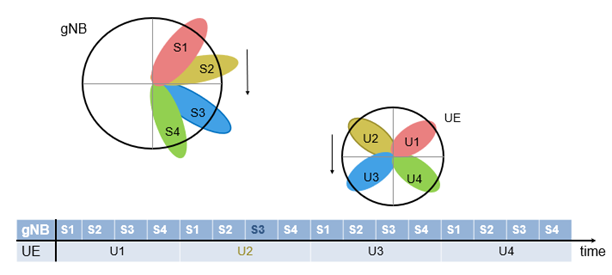
Figure 5. SSB beam sweeping in downlink.
The receiver processing of the transmitted burst includes:
- Addition of the scattering channel and AWGN
- Receive-end beamforming
- Timing correction
- OFDM demodulation
- Extracting the known SSB grid
- Measuring the RSRP based on the specified measurement mode
These steps are repeated for each of the receive beams, and the best beam-pair is selected based on the complete set of measurements made.
For more detailed information on steps involved in the recovery processing, see the example NR Cell Search and MIB and SIB1 Recovery.
For the idle mode RSRP measurement, use the SSS or the PBCH-DMRS in addition to the SSS. This can be configured in the RSRP Mode parameter in the simulation, which is a part of the example NR SSB Beam Sweeping. For FR2, the RSRP measurement is based on the combined signal from antenna elements, while the measurement is per antenna element for FR1.
Figure 6 shows the 3D spatial scene simulated using MATLAB, which includes the selected beam identified as a part of P-1. There are multiple scatterers introduced along with the addition of channel conditions. This approach gives more realistic view of the scenario simulated.
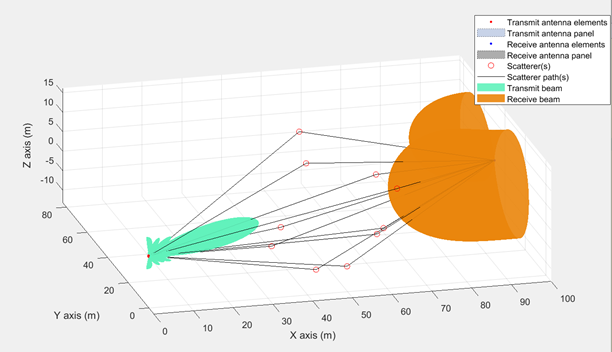
Figure 6. P-1 spatial scene simulation in MATLAB.
Procedure 2 (P-2): CSI-RS Based Transmit-End Beam Refinement
After the initial beam is established, obtaining a unicast data transmission with high directivity and high gain requires a beam much finer than the SSB beam. Therefore, a set of reference signal resources are configured and transmitted in different directions by using finer beams within the angular range of the beam from the initial acquisition process. Then the UE measures all these beams by capturing the signals with a fixed receive beam. Finally, the best transmit beam is selected based on the RSRP measurements on all transmit beams.
This procedure focuses on transmit-end beam refinement, where the beam sweeping happens at the transmit end by keeping the receive beam fixed. The procedure is based on non-zero-power CSI-RS for downlink transmit-end beam refinement and SRS for uplink transmit-end beam refinement. P-2 is performed once the initial connection and beam pair link have been established. This is a beam refinement procedure to further improve the connection, as illustrated in Figure 7. The simulation of P-2 is explained in detail in the example NR Downlink Transmit-End Beam Refinement Using CSIRS, and it works for both frequency range 1 (FR1) and frequency range 2 (FR2)/mmWave of NR 5G.
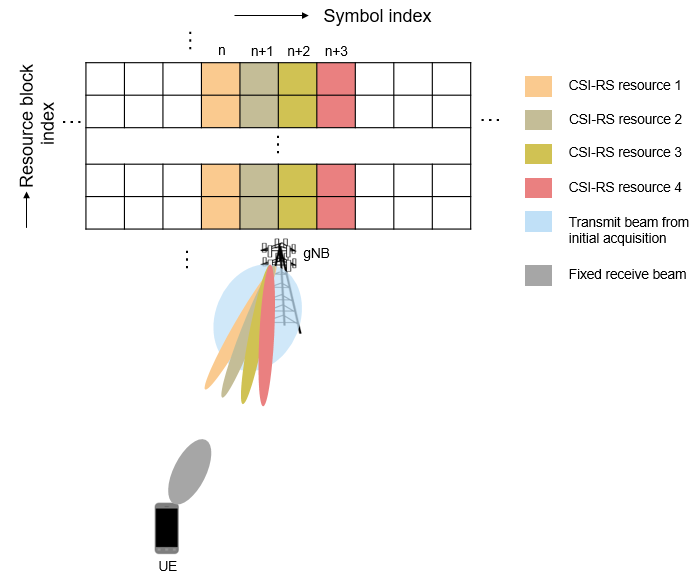
Figure 7. CSI-RS based transmit-end beam refinement.
Using digital beamforming enables the use of narrower beams to limit interference from multiple users. The generated CSI-RS signal is first beamformed before OFDM modulation. The modulated signal is transmitted across the scattering channel and AWGN is added. At the receiver, timing synchronization and OFDM demodulation are performed before receive beamforming. Beam measurement and beam determination follow to get the refined transmit beam. The components enabling beam management are highlighted in red in Figure 8.
Figure 9 is a snippet from the MATLAB simulation showing the digital beamforming operation. The script loops over all NZP-CSI-RS resources and applies the digital beamforming to all the active ones. Digital beamforming is applied to offer frequency selective beamforming within the same OFDM symbol.
%% Calculate the steering vectors for all active CSI-RS resources wT = zeros(nTx,numBeams); for beamIdx = 1:numBeams tempW = txArrayStv(fc,csirsBeamAng(:,beamIdx)); wT(:,beamIdx) = tempW; end %% Apply digital beamforming ports = csirs.NumCSIRSPorts(1); % Number of CSI-RS antenna ports activeRes = find(logical(csirsTransmitted)); % Get the active NZP-CSI-RS resource indices bfGrid = nrResourceGrid(carrier,nTx); % Initialize the beamformed grid for resIdx = 1:numNZPRes % Initialize carrier resource grid for one slot and map NZP-CSI-RS symbols onto grid txSlotGrid = nrResourceGrid(carrier,ports); txSlotGrid(csirsInd{resIdx}) = db2mag(powerCSIRS)*csirsSym{resIdx}; reshapedSymb = reshape(txSlotGrid,[],ports); % Get the transmit beam index beamIdx = find(activeRes == resIdx); % Apply digital beamforming using the determined weights if ~isempty(beamIdx) bfSymb = reshapedSymb * wT(:,beamIdx)'; bfGrid = bfGrid + reshape(bfSymb,size(bfGrid)); end end
Figure 9. Digital beamforming in MATLAB.
Figure 10 depicts the 3D scattering MIMO scenario simulated using MATLAB. This includes transmit and receive antenna array beam patterns, multiple scatterer positions, and their paths.
Procedure 3 (P-3): CSI-RS Based Receive-End Beam Refinement
P-3 focuses on receive-end beam adjustment, where the beam sweeping happens at the receive end given the current transmit beam. This process aims to find the best receive beam, which can be a neighbor beam or a refined beam.
For this procedure, a set of reference signal resources (non-zero-power [NZP] CSI-RS for downlink and SRS for uplink) are transmitted with the same transmit beam, and the UE or gNB receives the signal using different beams from different directions covering an angular range. Finally, the best receive beam is selected based on the RSRP measurements on all receive beams.
Summary
5G mmWave needs the intelligence to adapt to the rapidly changing channel dynamics and also maintain an efficient communication link. Beam management is an integral part of 5G NR and plays an important role in designing an efficient initial access and tracking procedure to periodically identify the optimal beam pair between the UE and gNB.
This white paper discussed various beam management techniques and their importance in maintaining a healthy communication link. We also saw the method of designing and simulating efficient 5G NR beam management procedures using MATLAB toolboxes.
The simulation can also be enhanced by adding more improvements such as interference-aware beam management and artificial intelligence–based beam management.
References
- 3GPP TR 38.300 NR; Overall description
- 3GPP TR 38.802 Study on New Radio Access Technology - Physical Layer Aspects
- 3GPP TR 38.912 Study on NR access technology
- 3GPP TR 38.213 Physical layer procedures for control
- 3GPP TR 38.214 NR Physical Layer Procedures for data
- 3GPP TR 38.215 NR Physical Layer Measurements
- 3GPP TR 38.211 NR Physical Channels and modulation
- 3GPP R1-167466 - 3GPP TSG RAN WG1 Meeting #86 - Key principles for beam management, Ericsson, August 2016
- 3GPP R1-167467 - 3GPP TSG RAN WG1 Meeting #86 - Reference signals and reports to support beam management, Ericsson, August 2016
- 3GPP R1-1712221 - 3GPP TSG RAN WG1 Meeting #90 - DL Beam Management Framework, Huawei, August 2017
- Giordani, M., M. Polese, A. Roy, D. Castor, and M. Zorzi. “A tutorial on beam management for 3GPP NR at mmWave frequencies.” IEEE Comm. Surveys & Tutorials, vol. 21, No. 1, Q1 2019.
Learn More
5G Toolbox provides standard-compliant functions and reference examples for modeling, simulation, and verification of 5G NR communications systems.
Phased Array System Toolbox enables you to incorporate antenna arrays and beamforming algorithms into system-level simulation models.
Explore these resources to learn more:
